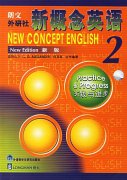高考语法讲解:动词八大词态解析
编辑:高中作文网 动词八大词态
一、一般现在时
一般现在时的形式
Do/does/ am/is/are have/has
一般现在时的功用 :
1. 表示一直发生的事情,经常发生的动作:
Nurses look after patients in hospitals.
Excuse me, do you speak English?
2. 表示客观事实或者真理:
Birds fly.
The earth goes around the sun.
3. 谈论时间表、旅程表等,如:
What time does the film begin?
The football match starts at 8 o’clock.
Tomorrow is Thursday.
4. 谈论籍贯、国籍等,如:
Where do you come from?
I come from China. 你是哪国人?我是中国人。
Where do you come from?
I come from Guangzhou. 你是哪里人?我是广州人。
时间状语:always, usually, often, sometimes, every week (day, year, month…), once a week, on Sundays,
Eg I get up at 8 o’clock every morning.
It often rains in summer in Beijing.
二、一般过去时
一般过去时是表示在说话时间以前发生的动作或者状态的动词时态,它是英语时态体系中最重要的时态之一。
一般过去时动词的构成形式:
did was/were had
在英语当中有一部分动词的过去式变化形式是不规则的,这类动词被称为不规则动词。总数大概不过200多个,但是使用频率很高。主要分成三类:
1》 AAA式:
cost cost cost
cut cut cut
hurt hurt hurt
shut shut shut
set set set
注意,有些动词的过去式与过去分词有两种形式,如:
bet bet / betted bet / betted
wed wed / wedded wed / wedded
wet wet / wetted wet / wetted
2》 ABB式
bend bent bent
bring brought brought
catch caught caught
hide hid hid / hidden
get got got/ gotten(AmE)
lead led led
3》ABC式
begin began begun
break broke broken
forbid forbade forbidden
grow grew grown
ring rang rung
wake woke / waked woken / waked
4》ABA式
come came come
become became become
run ran run
一般过去时的功用:
1) 表示一个没指明具体时间的过去的行动,如:
He worked in that bank for four years. (没说明起始时间,但是现在不在那里工作了)。
They once saw Deng Xiaopin.
Did you ever hear BackStreet Boy sing?
2) 表示在过去特定的时间结束的行动,如:
When did you meet him?
I met him yesterday.
When we lived in Phoenix, we studied at Arizona State University.
Where have you been?
I’ve been to the opera.
Did you enjoy it?
3) 表示过去的习惯 :
He always carried an umbrella.
They never drank wine.
时间状语:ago, yesterday, the day before yesterday, last week(year, night, month…), in 1989, just now, at the age of 5, one day, long long ago, once upon a time, etc.
Eg
I saw Tom playing football yesterday.
The war broke out 3 years ago.
三、现在完成时
现在完成时的形式:
Have/has done
现在完成时的功用 :
现在完成时可以说成是兼有现在与过去意义的一种复合时态。它与现在有密切联系,如:
—Oh, dear, I’ve forgotten her name.
和现在的联系就是 I don’t remember her name now.
—Fort has gone to Canada.
和现在的联系就是 He is not here. He is in Canada now.
1) 表示延续到现在的动作 (有时是总计做了多少次等)。
How many times have you been to the United States?
She really loves that film. She has seen it eight times.
Tom has lived in Now York all his life.
2) 表示开始与过去而在说话时刻结束的行动,如:
I haven’t seen you for ages. 我好久没见到你了。(说话时刻已经见到了)
This room hasn’t been cleaned for months. (也许从说话开始时刻就要打扫它了)
3) 表示过去的动作对现在造成的影响,如:
The window has broken.
4) 和最高级连用,表示到现在为止是最……的
What a boring film! It’s the most boring film I’ve ever seen.
—Is it a thick book?
—Yes, it is the thickest book I’ve ever read.
5) 和句型 This is the first time…, It’s the first time 连用,如:
This is the first time he has driven a car.
Is this the first time you’ve been in hospital?
Professor Johnson has lost his passport again. It’s the second time he has lost it.
6) 和ever, never, yet, just, already 等副词连用,如:
Have you ever eaten French cheese?
We have never had a private car.
Has it stopped raining yet? (yet 表示期待雨停止)
Would you like something to eat?
No, thanks. I’ve just had lunch.
Don’t forget to mail the letter, will you?
I’ve already mailed it. (already 表示比预料的要快)
7)与since 或for+一段时间 连用,since 表示与某一时刻或从句连用,表示“从那一刻到说话时为止”,它总是与完成时连用,如:
She has been here since 6 o’clock.
Since I was a child I have lived in England.
I have read the novel for 3 hours.
四、过去完成时
had done
1.概念:以过去某个时间为标准,在此以前发生的动作或行为,或在过去某动作之前完成的行为,即“过去的过去”。
例句:
As soon as we got to the station, the train had left.
By the end of last month. We had reviewed four books.
注意:过去完成时是一个相对的时态。必须有时间状语:before, by the end of last year(term, month…),etc. 或则是有一个过去式可做参照,而且动作发生在这个过去式之前。
如:
I had learned 2000 words by the end of last week.
When we got there, the train had left.
五、现在进行时
am/is/are doing
现在进行时的功用 :
1) 表示说话时正在发生或者进行的动作
Please don’t make so much noise, I’m studying.
Let’s get out. It isn’t raining any more.
2) 表示在现在相对较长一段时间内正在进行的动作,但是说话一刻不一定在做的动作
Have you heard about Tom? He is building his own house.
David is teaching English and learning Chinese in Beijing.
这些动作,在说话时并不一定在发生或进行,而是在包括说话的一刹那在内的一段时间内发生、进行的。
3)表示最近的确定的安排
Ann is coming tomorrow.
Oh, is she? What time is she arriving?
At 10:15.
Are you meeting her at the station?
I can’t. I’m working tomorrow morning.
以上句子也可以用be going to (do) 的形式来表示。但是谈论已确定的安排时候,用现在进行时态显得更加自然,除非受到动词的功能的限制。在此,切不可用will, 如Alex is getting married next month. 不能用 will get married.
4) 和always 连用表示某种情绪,可能是厌烦也可能是赞扬,如:
Tom is always going away for weekends.
My husband is always doing homework.
时间状语now, at this time, these days, etc.
六、过去进行时
过去进行时的构成形式为:
was/were doing
过去进行时的功用 :
1) 表示在过去某个时间或则某段时间正在进行的动作,如:
When I rang him up, he was having dinner.
This time last year I was living in Shanghai.
What were you doing at 10 o’clock last night?
2) 过去进行时和一般过去时连用,表示在一个动作发生的过程中,发生了另一个动作,如:
It was raining when I got up.
I fell asleep when I was watching television.
3) 过去一般时所说明的动作是已经完成的,而过去进行时不表示正在进行的动作一定会完成,如:
Tom was cooking the dinner.
Tom cooked the dinner.
时间状语 at this time yesterday, at that time或以when引导的谓语动词是一般过去时的时间状语等。
We were reading books when the teacher came in.
七、一般将来时
1.一般将来时的基本概念
一般将来时表示将来某一时刻的动作或状态,或将来某一段时间内经常的动作或状态。一般将来时由助动词shall(第一人称),will(第二、三人称)+动词原形构成。Shall/will do
2.一般将来时的形式
●will 常简略为 'll,并与主语连写在一起,如:I'll,he'll,it'll,we'll,you'll,they'll。
●一般疑问句如用will you…?其简略答语须是Yes,I will或 No,I will not;
如用 Shall you…?(较少见)其简略答语须是 Yes,I shall.或 No, I shall not
3.一般将来时的用法
1)表示将来的动作或状态
2)表示将来经常发生的动作。
时间状语
from now on, in the future tomorrow, next day(week, month, year…),soon, in a few minutes, the day after tomorrow, etc.等。
4.一般将来时的其他用法
1)“be going to+动词原形”表示即将发生的或最近打算进行的事。例如:
①It is going to rain. 要下雨了。
②We are going to have a meeting today. 今天我们开会。
2)go, come,start,move,sail,leave,arrive,stay等可用进行时态表示近期的确定的计划安排,例如:
I'm leaving for Beijing.
我要去北京。
3)“be to+动词原形”表示按计划要发生的事或征求对方意见。例如:
①Are we to go on with this work?我们继续干吗?
②The boy is to go to school tomorrow.这个男孩明天要去上学。
4)“be about to+动词原形”表示即将发生的动作,意为:很快,马上。后面一般不跟时间状语。例如:
We are about to leave.我们马上就走。
5)某些词,如come, go, leave, arrive, start, get, stay 等的一般现在时也可表示将来,表示按时刻表进行。
①The meeting starts at five o'clock.会议五点开始。
②He gets off at the next stop.他下一站下车
八、过去将来时
过去将来时表示从过去的某一时间来看将来要发生的动作或存在的状态。过去将来时常用于宾语从句和间接引语中。
1过去将来时的构成
Would/should do was/were going to do
例句:
I didn't know if he would come.
=I didn't know if he was going to come.
我不知道他是否会来。
She was sixty-six. In three years,she would be sixty-nine.
她66岁了。三年后,她是69岁。
She told us that she would not go with us,if it rained.
她告诉我们,如果下雨,她就不和我们一起去了。
I didn't know how to do it. What would be their ideas?
我不知如何去做,他们会有什么想法呢?
2.过去将来时常可用来表示过去习惯性的动作。此时,不管什么人称,一律用would
This door wouldn't open.
这扇门老是打不开。
Whenever he had time,he would do some reading.
他一有时间,总是看书。
I would play with him when I was a child.
当我还是孩童时,总是和他一起玩。
时间状语
the next day(morning, year…),the following month(week…)








